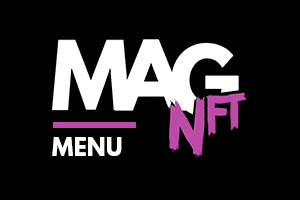During the last NFT boom of 2021, one NFT marketplace ruled the industry. With another NFT boom seemingly on the horizon, could this major platform rise once again? That NFT marketplace is OpenSea.
OpenSea played a major role in the mainstream explosion of NFTs, becoming the NFT marketplace of choice for millions of incoming enthusiasts around the world. Today, it faces competition from all sides, and so despite NFTs once again reaching the limelight, will OpenSea be able to capitalise?
Here’s our complete 2025 guide to OpenSea.

What is OpenSea?
OpenSea is a peer-to-peer NFT marketplace, focused on supporting Ethereum-based blockchains. Users can create, buy, and sell NFTs of all shapes, sizes and categories, including digital art, collectibles, virtual land, and much more.
Created by Devin Finzer and Alex Atallah, OpenSea capitalised on growing interest in NFTs at the end of the 2010s, and had become the #1 marketplace in the world by the time of 2021’s NFT boom.
On OpenSea, users can engage in many types of NFT transactions, including:
- Primary sales: the first sale of a new NFT, held through the OpenSea launchpad
- Secondary sales: existing NFTs listed at a set price by their current holder
- NFT auctions: Holders can auction NFTs they’d like to sell, with a set end date
- NFT offers: Prospective buyers can propose a purchase price for an NFT, even if it is not listed for sale
As an NFT marketplace, OpenSea uses smart contracts to ensure secure and transparent transactions. Users can connect many of the most popular wallets to the site – including MetaMask, Coinbase Wallet and many more – to view and interact with the NFTs that are listed.
OpenSea is best-known as one of the go-to marketplace for trading of the biggest NFT collections, including CryptoPunks, Bored Ape Yacht Club, Pudgy Penguins and more. The OpenSea marketplace also supports many smaller collections, making it an attractive platform for creators and collectors alike.

What has OpenSea accomplished so far?
OpenSea’s story began when CryptoKitties – a blockchain game developed by Dapper Labs – rocketed in popularity back in 2017. For Finzer and Atallah, it made them recognise the potential of NFTs, and so they set out to build an NFT marketplace that could serve this emerging industry.
The OpenSea website went live in December 2017. It quickly grew a loyal fanbase that admired its user-friendly and approachable design, being one of the first marketplaces of its kind to make interacting with NFTs simple and straightforward.
From there, OpenSea rose to become the go-to NFT marketplace, even though trading volumes were initially rather modest. This all changed in 2021, with the explosion of NFTs seeing monthly trading volumes reach billions of dollars in just a few months, placing OpenSea at the centre of this new industry.
OpenSea capitalised on its overnight success, raising $100 million USD in July 2021, and a further $300 million USD in January 2022. This took that valuation of OpenSea to a staggering $13.3 billion USD.

NFTs saw a decline in interest as 2022 rolled on, though OpenSea used the funds generated over the past year to solidify their position. In April 2022, OpenSea acquired Gem, an NFT marketplace for experienced traders, later relaunching it as OpenSea Pro in April 2023.
In October 2022, OpenSea faced its first major competitor, with the debut of new NFT marketplace Blur. Blur quickly took OpenSea’s crown as the #1 NFT marketplace worldwide, with a fluid user experience and an upcoming token launch enough for many users to make the switch.
OpenSea have faced further challenges across 2023 and 2024, with the surge of NFTs on Solana – a blockchain OpenSea does not support – helping Magic Eden rise to the summit of the NFT industry.

Across its history, OpenSea has seen its fair share of controversy. Early on, the platform struggled to detect and prevent the sale of plagiarised and stolen NFTs – though thankfully, the development of suspicious activity detection and verified collection pages helped to combat this issue.
OpenSea has also seen backlash for its wavering stance on creator royalties. This was one of the major factors that saw Blur and Magic Eden wrestle dominance of the NFT marketplace landscape away from OpenSea’s hands.
Today, many view OpenSea to have slipped to the third best NFT marketplace, ranking behind both Magic Eden and Blur – though with a new dawn for NFTs on the horizon, it’s anyone’s guess who will rise to the top in 2025.

What does the future hold for OpenSea?
With 2025 nearing, OpenSea is in an interesting position.
Rumours have been swirling throughout Q3 and Q4 2024 that OpenSea could finally debut its own token. This would allow it to compete head-to-head with its rivals, as Blur has its $BLUR token, and Magic Eden has its recently-launched $ME token.
The OpenSea team also teased a revamp of their NFT marketplace, set to arrive in December 2024. Feedback from private tests has been positive, but whether this overhaul can transform OpenSea’s fortunes and take it back to the top of the NFT marketplace landscape remains to be seen.
When NFTs first boomed in 2021, OpenSea was perfectly positioning to become the dominant NFT marketplace. In 2025, OpenSea position is much more fragile – but with their history, experience and funding, the year ahead could flip the NFT industry on its head all over again.

Riding crypto waves since 2012, bridging digital and physical worlds through prose.






